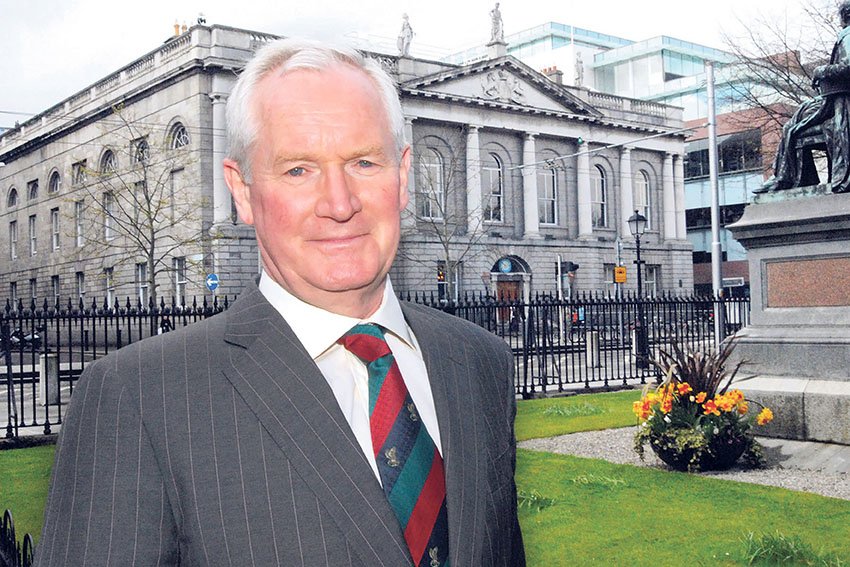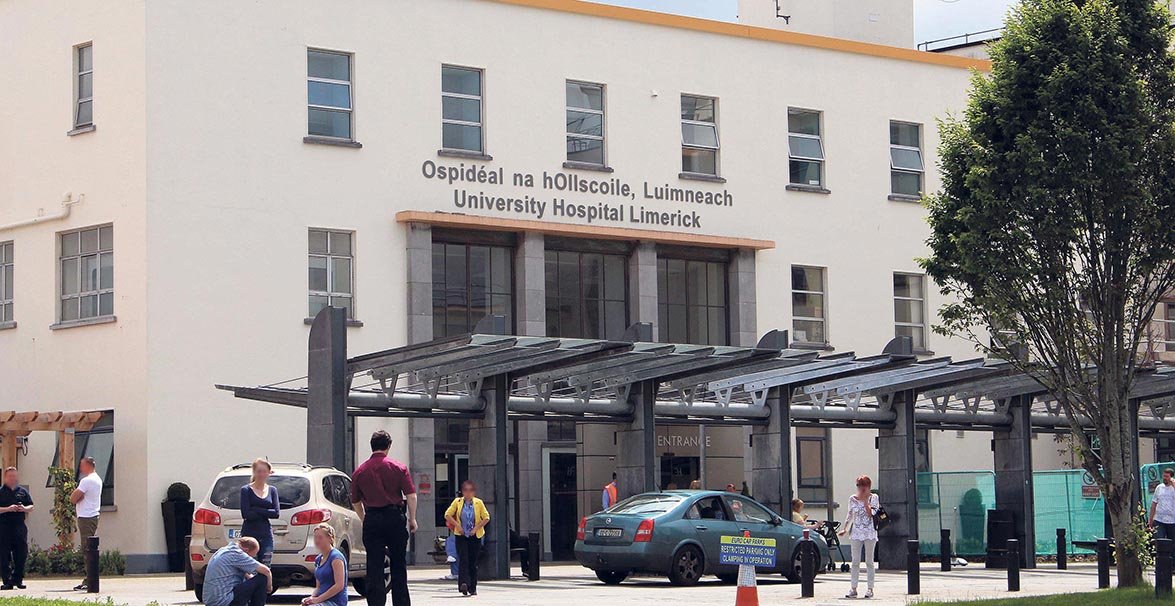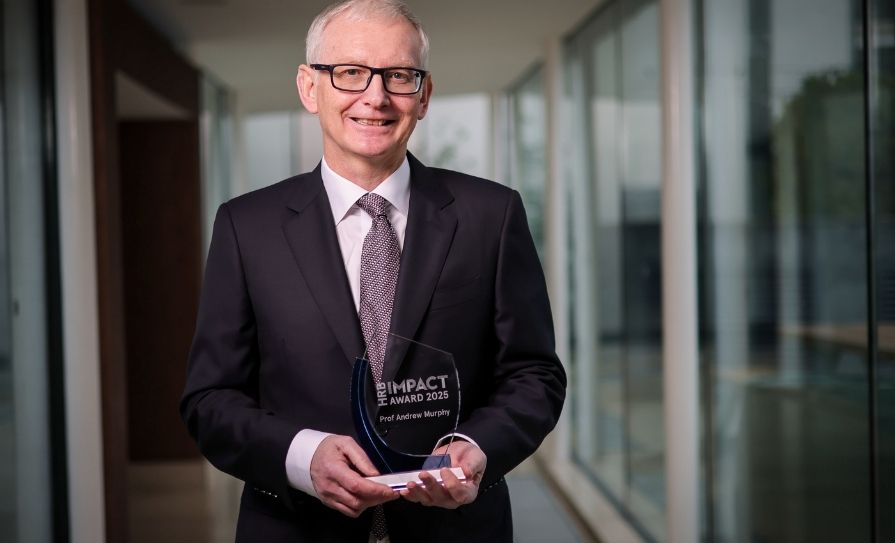The Irish health system has piloted a number of initiatives to improve patient flow in recent years. Paul Mulholland examines the difficulties in implementing the latest such programme in Limerick and Galway and asks why it is so challenging to produce lasting reforms
Patient flow is defined as the movement of patients through the hospital system as part of their care pathway. Ever since funding dried up following the economic crash, there has been an increasing emphasis on patient flow through streamlining and improving existing processes. However, this has proved difficult to achieve. Documents obtained by the Medical Independent (MI) show the challenges faced in implementing the national patient flow improvement programme in hospitals in the west.
Special Delivery Unit
Improving patient flow was a key aim of the Special Delivery Unit (SDU). The unit, established under the Fine Gael/Labour coalition Government after the 2011 election, was a flagship development intended to drive change within scheduled and unscheduled care. The then Minister for Health James Reilly recruited Dr Martin Connor to lead the project following his work in the area in Northern Ireland.
In response to a parliamentary question on 20 March 2013, Minister Reilly stressed the benefits that the SDU had brought. According to the Minster, the unit continued to monitor emergency department (ED) activity closely, engaged with key hospitals via teleconference and on-site meetings, and collaborated to put in place a range of measures “to assist with patient flow and reviewing the available data for trends in relation to the reported levels of high activity”.
The proposal to create Hospital Groups that year was also intended to improve patient flow in the system through greater collaboration between different hospitals. However, the SDU’s early gains in reducing overcrowding and shortening waiting lists proved difficult to sustain, largely due to continued funding cuts. The SDU initially was able to allocate funding, but this power was removed as the unit lost its independence, with its move from the Department of Health to the HSE’s acute hospital directorate (it is now part of the HSE’s National Services Directorate). Dr Connor ceased his involvement with the unit, and Minister Reilly was replaced by Minister Leo Varadkar. The Emergency Department Taskforce was established in 2014 due to the continued problem of ED overcrowding, while waiting time targets continually failed to be achieved.
Irish Hospital Redesign Programme
Perhaps because of the difficulties experienced by the SDU to improve patient flow across the entire system, a new programme launched in 2014 was more modest. The Irish Hospital Redesign Programme (IHRP) was the brainchild of the then National Director of Acute Hospitals Dr Tony O’Connell, based on his experience in the Australian healthcare system. Initially, it would be based in one hospital, but the plan was to roll the initiative out to other sites at a later stage. Tallaght University Hospital (TUH) was selected as the ‘proof of concept’ site. A small amount of funding (€1.2 million) was set aside for the programme, which received little-to-no publicity. Although the SDU was involved in the project and PA Consulting was brought in as partners, the IHRP was to adopt a much more ‘bottom-up’ approach to improving patient flow than had previously been the case. Change was to be driven by hospital staff through the employment of process improvement tools, such as Lean.
The programme got off to a bad start when Dr O’Connell decided to return to Australia in 2015. As previously reported in this newspaper, Dr O’Connell’s resignation led to a leadership vacuum for the IHRP. According to the final report, seen by MI, the preparation for the programme was poor.
“At the outset, the context of the diagnostic phase was not clearly understood,” the document stated. It added that the diagnostic phase took three months, which was “much longer than was anticipated or should be necessary”. Data quality was also an issue due in part to difficulty accessing information to develop insight on the drivers of nationally-reported indicators.
The diagnostic phase produced some 500 areas for improvement. These issues were grouped, categorised for impact and the Tallaght team tabled 21 separate projects. Despite the difficulties in bedding-down the programme, progress was made in a number of areas.
IHRP-led projects realised a reduction in average patient experience time (PET) by 72 minutes, a freeing-up of the equivalent of 12 beds to reduce trolley waits and bed day savings in excess of €3.7 million per year.
Also, it was estimated that the specialist care of the elderly ward would free-up 4.4 beds, which would give a further saving of €1.3 million.
Analysis of the projects in Tallaght supported by IHRP showed a measurable improvement in reducing length of stay; increased patient throughput; more efficient resource use; improved transfer or referral time; and better nursing and ward processes.
Despite these gains, it was decided not to continue the programme or extend it to other hospitals.
Speaking to MI, the author of the final report and chair of the IHRP working group, Prof Frank Keane, blames a lack of political support for the ultimate decision not to continue the programme. Prof Keane said that although the Minister for Health at the time, Leo Varadkar, initially supported the programme, this support waned.

“Because these things move very slowly, in my view, he lost interest,” Prof Keane said.
“It didn’t produce quick results; everybody wants results tomorrow. And quality improvement is an exercise that takes place over a period of time; you have to get people on board, they have to be happy with what they are doing, and then you gradually make the changes, or collect the information about which you want to make the changes about.”
Another initiative
In 2016, the HSE’s National Service Plan stated the IHRP was to be implemented in University Hospital Limerick (UHL) later that year. However, the programme never moved beyond Tallaght as it was succeeded by another patient flow initiative. While the IHRP was still in existence, in May 2015 an invitation to tender was issued by HSE Health Business Services, titled ‘Scientific management practices in healthcare to tackle patient flow: Proof of concept’. According to the tender, “the successful technical partner with the Clinical Strategy and Programmes (CSP) Division will work in partnership with the National Programme Director for the integrated programme for patient flow and acute hospitals division and the relevant Hospital Groups and Community Healthcare Organisations”. It took until August/September 2016 for this programme to commence and GE Healthcare Finnamore (GEHCF) was selected as the consultancy firm.
“The lack of oversight, shared learning with IHRP, the duplication of effort and waste of resource in terms of personnel and time has been unfortunate,” according to the final IHRP document.
Prof Keane was asked if he would like to advise on the new programme. However, he was not given sufficient assurances that the learning from the IHRP would be taken into consideration. Given what was to occur with the new programme, the conclusions in the IHRP document are interesting to note.
“It is our view that redesign processes will not easily take root in HSE hospitals as they stand because managers, although often enthusiastic about their potential, cannot and do not create conditions for their benefits to be maintained. This is, in part, due to the current overwhelming, top-down, directive-driven, compliance-orientated and targeted approach to HSE operational hospital management. Meanwhile, staff in Irish hospitals are often too busy and even overwhelmed by their day-to-day clinical pressures.”
The document also strongly recommended a three-to-four month “staggered engagement, rather than working with two hospitals concurrently”.
Speaking to this newspaper, Prof Keane also expressed concern about the continued use of consultancy firms for these initiatives.
“I felt it was time that we developed our own national quality improvement programme, and that we used consultancies under the terms that we wanted them to work, rather than working under their terms.”
National Patient Flow Improvement Programme
University Hospital Galway (UHG) and UHL were selected as the pilot (or ‘proof of concept’) sites for the new initiative, which was now called the National Patient Flow Improvement Programme (NPFIP). The original tender closely resembled the recent NHS Scotland tender for a similar programme. The HSE agreed to pay GEHCF up to €650,000 annually for its support in rolling out the programme. Like the IHRP, process management tools such as Kaizen and Lean were central.
Consultant in Rehabilitation Medicine Dr Áine Carroll was instrumental in setting up the new programme as the then HSE National Director for Clinical Strategy and Programmes. Speaking to MI, Dr Carroll said the initial emphasis of the SDU was on measurement and targets, rather than specifically how to improve patient flow.
“Given that flow was such an issue, I felt it needed to be called out as something that we would really concentrate on over a period of time,” Dr Carroll said.
“And it took a little bit of time for that to land, which I thought was interesting. I had to go through a few national directors of acute hospitals before I got agreement that we would take a concerted look at this.”
Dr Carroll stressed that she did not see the programme as a competitor to the IHRP.
“My feedback is that the IHRP worked at that very hard, but I never saw it as a competition,” Dr Carroll said.
“I always thought… let’s check lots of different things and see if they make a difference. If they make a difference — brilliant, we will stick with them and sustain them. But if they’re not having the desired impact, then you should not necessarily persevere with things. To my mind, they were looking at slightly different things and they each had different and interesting conclusions.”
Evaluation
Phase one of the NPFIP came to an end in March 2018. Documents obtained by MI through Freedom of Information law highlight the difficulties experienced by the initiative. The original intention was for phase 2 to include two further hospitals. Following the evaluation of phase 1, the decision was made to focus the remainder of the programme on Saolta University Health Care Group. The Galway hospital had experienced much greater success than UHL in improving patient flow. For example, according to an April 2018 programme summary, UHL had one unsuccessful ‘workout’ regarding ED non-admitted flow. It also had challenges in the implementation of one element of Kaizen “in part due to operational pressure”.
When asked why Galway was more successful than Limerick in implementing the programme, Dr Carroll said: “To compare them would be slightly unfair. They are different contexts and the approach was very hard to standardise. What happens at a local level can be quite different.”
In a letter to the then National Director, Acute Operations, Mr Liam Woods (now National Director, Chief Operations) and Dr Carroll on 20 March 2018, then Head of the SDU, Ms Grace Rothwell (now General Manager of University Hospital Waterford) wrote that this “programme is the first of its kind in the Irish healthcare system and is the first touchpoint for a culture change in terms of service delivery, quality of care and patient experience”. No reference was made to the IHRP.
Ms Rothwell wrote that ‘proof of concept’ had been delivered. “We have learned that the approach, in the right environment, can work in Ireland, same is evidenced by the successes in Galway.”
Ms Rothwell then wrote about why a change in phase 2 was necessary.
“Ongoing challenges in unscheduled care in Ireland coupled with the persistent demand for tangible results in ‘flow’ in Limerick and Galway necessitate a change in the agreed phase 2.”
Ms Rothwell said it has proved difficult to have “any scalability” in phase 1, given the lack of resources associated with the SDU team.
“A significant concern at present is the absence of a sizable national team and the limitations of the existing scope in that it will not spread skill far enough. This has impacted on the programme from the outset,” according to the letter.
“Finally, Galway has made a success of the investment, but it would benefit significantly from continued assistance on site. Ceasing GEHCF support in Limerick, as per the end of phase 1, would enable greater concentration of resource in Galway, which would support the [UHG] team and would equally enable roll-out across the Saolta Group.”
The revised phase 2 would see concentrated GEHCF support on-site in Galway to assist with unscheduled care improvement. It would also involve working with the Galway team in undertaking Kaizen 4 on elements of the unscheduled care pathway and developing an “unscheduled care academy” at Galway by running a smaller set of training and development sessions, which would be open to staff from across the Saolta Group.
The aim was to have a number of “upskilled staff” who would then undertake patient flow projects on their own site.
According to Ms Rothwell, one challenge for Saolta would be “tackling the issue of engagement from the medics. Further improvement in the unscheduled care pathway will not be forthcoming without the executive team in [UHG] ensuring that clinical teams engage with the fundamental requirements of senior decision makers to support flow”.
In an appendix to the letter, Ms Rothwell noted there was the “misperception” that the programme should have solved the issue of ED overcrowding and patients waiting on trolleys in Galway.
“The misperception around reduction of trolley waits underlines some of the key challenges with any programme of this sort — understanding the true baseline in the hospitals and the realistic understanding of how much time and resources it requires to effect improvement on any significant scale.”
Ms Rothwell wrote that to make a “significant and measurable” performance improvement at a site such as UHG, for example, would require a team of around five-to-six well-trained and experienced individuals, full-time, over three-to-five years, delivering change, rather than coaching others.
In terms of consultancy support, Ms Rothwell pointed out that the NPFIP had two dedicated GEHCF staff for one year, down to one for the last six months, with the primary focus being coaching the local and national team members during this final period.
“This is not sufficient to move the needle in terms of performance. It is, however, enough to start to effect culture change, which we have seen at Galway,” she wrote.
At the end of the appendix, Ms Rothwell stated: “If the expectation of the HSE is to have a national programme to eliminate trolley waits and make measurable improvements across the Hospital Groups, we would suggest a different approach. This will involve support from Government and adequate resourcing to enable change. We would be more than happy to discuss what is needed, and take a partnership approach with you to make this a reality.”
What now?
According to the HSE, the project with GEHCF finished at the end of June. A final evaluation report on the programme is being produced.
When questioned on the programme, a spokesperson for GEHCF stated: “This programme was primarily a test of approach and we verified that scientific management principles could be applied.”
There are also questions about the future of the programme, given the challenges identified and changes in the HSE organisational structure. Dr Carroll was asked if there was a danger that the programme would come to an end now that she is no longer HSE Clinical Lead and the division she led, Clinical Strategy and Programmes, is no longer in existence. A spokesperson for the HSE told this newspaper it has been agreed that the future of this work now lies with the Performance Management and Improvement Unit in collaboration with Acute Operations and clinical input as required through the office of the Chief Clinical Officer.
“Whether or not it is seen as an approach that will be pursued, I certainly hope that it is,” Dr Carroll said. “That won’t be for me to judge. The need to take an evidence-based, systematic approach with empowering front-line staff to make the change is the way forward.”
Patient flow improvement initiatives – University of Limerick Hospitals Group
Every morning, as part of the Red2Green initiative, patients are reviewed and treatments and diagnostics are organised to help identify a discharge date and avoid delayed discharges.
Another initiative is the development of the clinical rehab and support unit (CRSU) at Nenagh Hospital. This unit has the support of the multidisciplinary team, including allied health services, which has allowed greater access for patients to transfer to Nenagh Hospital.
The 24/7 bed bureau dedicated phone line, manned by clinical staff, is a single point of contact for GPs. The bed bureau makes access to acute hospital care easier from primary care.
The acute surgical assessment unit (ASAU) is an assessment facility for acute surgical patients who are aged over 16 years. The unit is open from 8am to 8pm, Monday to Friday.
Designated specialty wards have been introduced in some areas at UHL so patients with a particular condition are cared for in one location by an experienced clinical team.
Optimend — an older persons study in ED — is exploring the impact of early intervention by health and social care professionals on safe hospital admission avoidance and improved patient outcomes.
The acute surgical short stay unit is a designated 12-bay unit for patients, with defined surgical conditions appropriate to an expected short hospital stay.
The group is working on a number of initiatives for the over-75s, with the aim of prioritising this group for treatment and expediting their journey through the ED.
The development of five medical day beds is underway, which will allow patients to attend this unit for a day procedure/treatment/intervention.
Admission avoidance pathways in VTE, epilepsy and endocrinology are currently being developed to manage a greater number of patients via the admission avoidance unit.
Patient flow improvement initiatives – Galway University Hospitals
Model wards —
medicine
A particular focus has been placed on discharge planning as part of this work stream and initiatives include ward safety huddles, regular multidisciplinary team (MDT)meetings and daily board rounds.
Model wards —
surgery
As part of this work stream, ward safety huddles are now standard on all wards, a number of ward environment improvements were undertaken, information for patients was updated and there is a continued focus on predicted discharge date and earlier critical care transfers.
Cath lab electronic whiteboard
This work stream is in progress with the development of an online referral system and daily huddle. Scheduling, prioritisation and the validation of the workflow time stamp have all significantly improved through the display of elective activity on an electronic whiteboard.
Perioperative directorate integrated governance taskforce group — theatre
An analysis of the theatre capacity in Galway University Hospitals, Portiuncula University Hospital (PUH), Mayo University Hospital (MUH) and Roscommon University (RUH) has been completed and reviewed with a view to transferring appropriate surgery to PUH, MUH and RUH.
Capacity and workforce planning is underway to inform equipment and bed capacity requirements. The aim is to have agreed new pathways implemented later this year.
Unscheduled medical care project
Work on this project is to progress this year.
ERAS pathway
A structured Enhanced Recovery After Surgery (ERAS) programme with full MDT input is in the process of being developed.
Other progress to date:
The model ward improvements have resulted in earlier admissions from ED and improved predicted discharge date compliance.
An interprofessional medical and surgical discharge round has been set up. Overall reduction in >14 day LOS since commencement of the round.
End PJ Paralysis commenced on one ward in December 2018. Now five wards participating.













Leave a Reply
You must be logged in to post a comment.